Coleus is a tropical low-maintenance foliage plant and a good choice for any gardener. The bright and colourful leaves are sure to make your summer garden pop! With all that beauty to offer, why not plant it inside, too? Learn how to grow coleus as a houseplant or as a summer annual in planting beds.
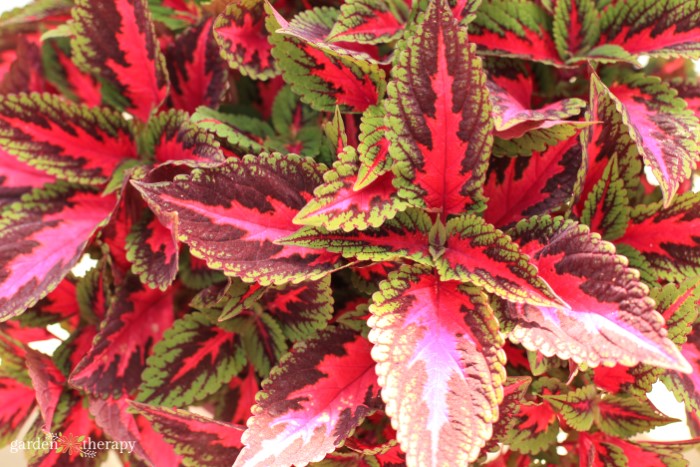
Native to Malaysia, the coleus is a tropical plant only hardy in zones 10 and 11. Coleus, botanically known as Plectranthus scutellarioides, are treated as summer bedding or annual plant everywhere else. Indoors, you can also grow them as houseplants.
Coleus flowers look like spikes of tiny blue or purple flowers. While they are cute, most people plant coleus for vibrant foliage. The leaves have a wide variety of leaf margins, from plain to ruffled, colours ranging from reds, yellows, and oranges to greens and purples.
Known as fast growers, coleus also comes in many sizes. Some of the plants grow to be large and upright while other varieties trail, good for hanging baskets.
Appreciated by Victorian gardeners, coleus then had a resurgence in the 1960s and 1970s. Ever since, they have been a garden staple, used to bring some diversity to containers and beds with their attractive leaves. Today, many container gardeners grow large coleus collections!
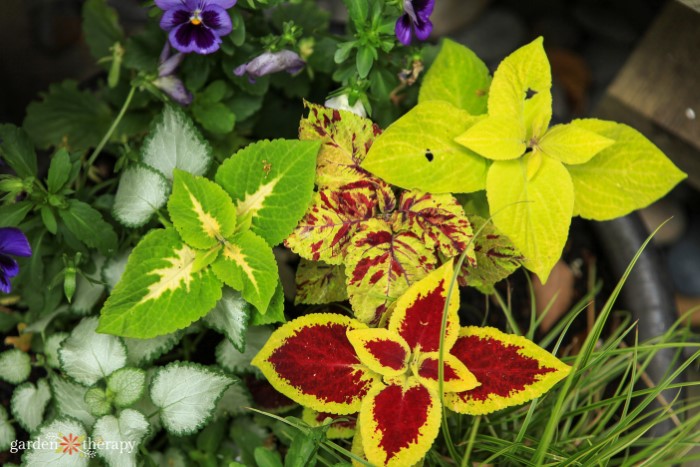
How to Grow Coleus Plants
Grow Coleus in a Container
Coleus works wonderfully as a container plant. In fact, they prefer loose potting soil rather than dense soil found in the garden. When planted in a container, they quickly fill the space and brighten up the arrangement with their attractive foliage.
If planting in a container, make sure the pot is large enough to handle the plant at its full size.
Grow Coleus in the Ground
If growing in the garden, coleus plants grow best in moist, well-draining soil. The plants have fibrous roots that like to be moist and cool. Top-dress the soil with mulch in a garden planted with coleus.
Space seedlings 10 – 12 inches apart. Read the label for specific cultivar information. Gardeners should plant coleus, like any annual plant, in soil amended with organic matter.
Does Colelous Like Shade or Sun?
The plant loves shade. They grow best in full to partial shade. When planted in full sun, they will become leggy and look washed out.
Taking a look at the leaves, you can always tell if the coleus is getting too much sun. The leaves lose their colour and can even appear scorched.
If this happens, feel free to move the plant, avoiding areas with western exposure.
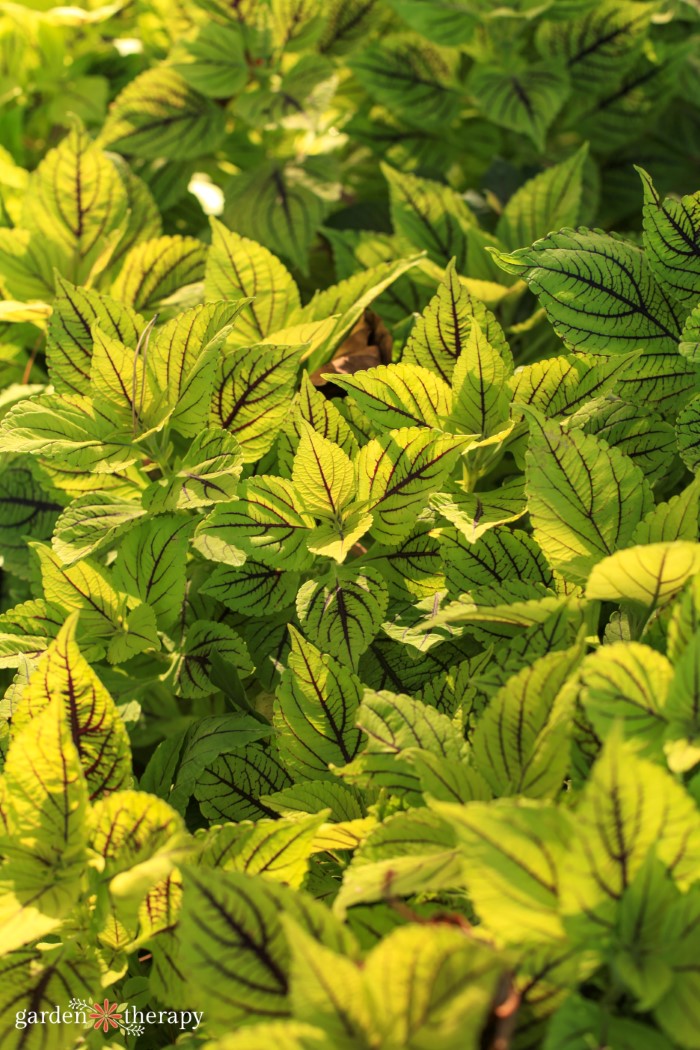
Coleus Indoor Plants
An annual outside, coleus can also grow indoors as a houseplant. Whether it’s year-round or just for the winter while you wait to plant them outside, the plant will happily grow inside the home.
Indoors, coleus plants like bright light but not hot direct sun. Avoid western-facing windows unless the plant sits far away from the window or is protected by a curtain. They tolerate minimum indoor temperatures to 60°F and humidity levels to 30 percent.
When planting indoors, make sure to use high-quality potting soil and liquid fertilizer. This ensures they get enough aeration for their roots and tons of nutrients to grow to their full potential.
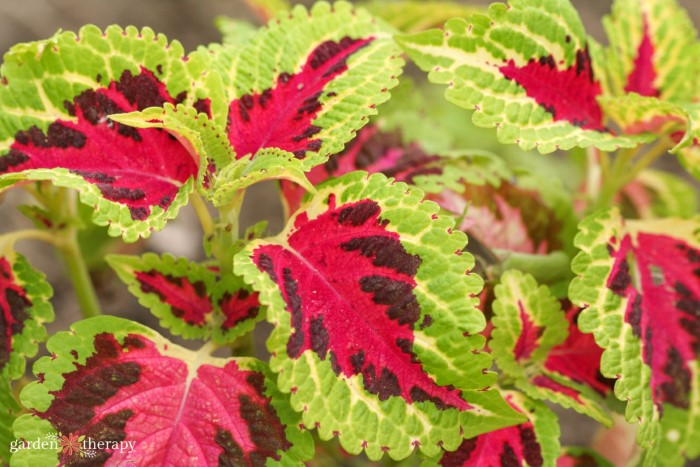
Coleus Care Guide
Water
Coleuses are thirsty plants. Not at all drought-tolerant, they require frequent watering. As shade lovers, if your plant gets any frequent sunlight, keep an eye on it for any drooping leaves. They’re quick to wilt but will also perk back up within an hour after getting a good watering. Feel free to film a time-lapse and witness it for yourself!
On hot days, water your coleus every day…if not twice! For indoor plants, water every 2-3 days when it is hot. Overall, keep the plant hydrated but never leave it in soggy soil.
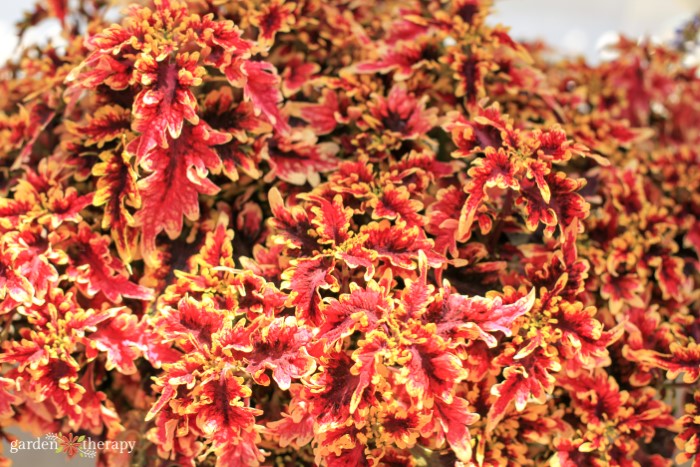
Fertilization
A quick-growing plant, a small coleus in the spring can easily turn into a big and full plant by the end of the season. If you’re looking to fill containers, hanging baskets, or beds, giving it some liquid fertilizer will help encourage it to reach its full potential.
Use a diluted liquid fertilizer while watering once a week or every other week. When planting, you can also add slow-release fertilizer.
Pruning
Like any plant in the garden, you can keep coleus healthy by removing flowers and dead leaves periodically. Coleus grows quickly and you may want to shape it throughout the season. Otherwise, it can appear leggy. When it gets tall, cut off the top to encourage the plant to bush out.
The coleus can also get leggy indoors, especially during the winter if reaching for sunlight. Indoor gardeners should cut back the stems to encourage a bushier plant and repot the plant every 2 years or as the plant outgrows the container.
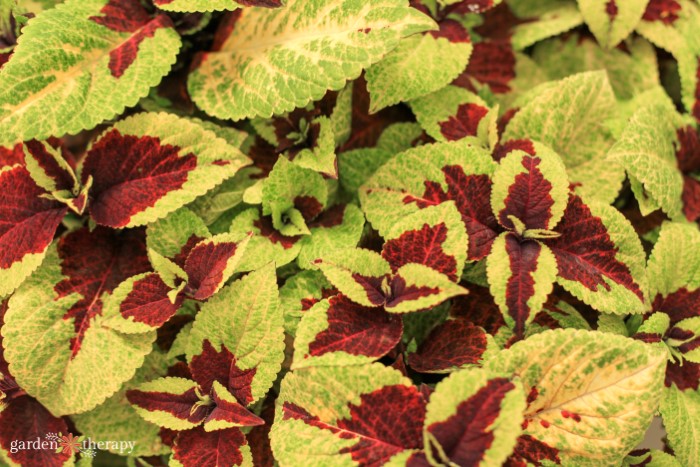
Pests and Diseases
Outdoors, slugs may bother coleus when they are planted in a very shady area. Indoor gardeners may see spider mites, mealybugs, or whitefly. These are plant bugs traditionally found on many houseplants and can be treated following this guide.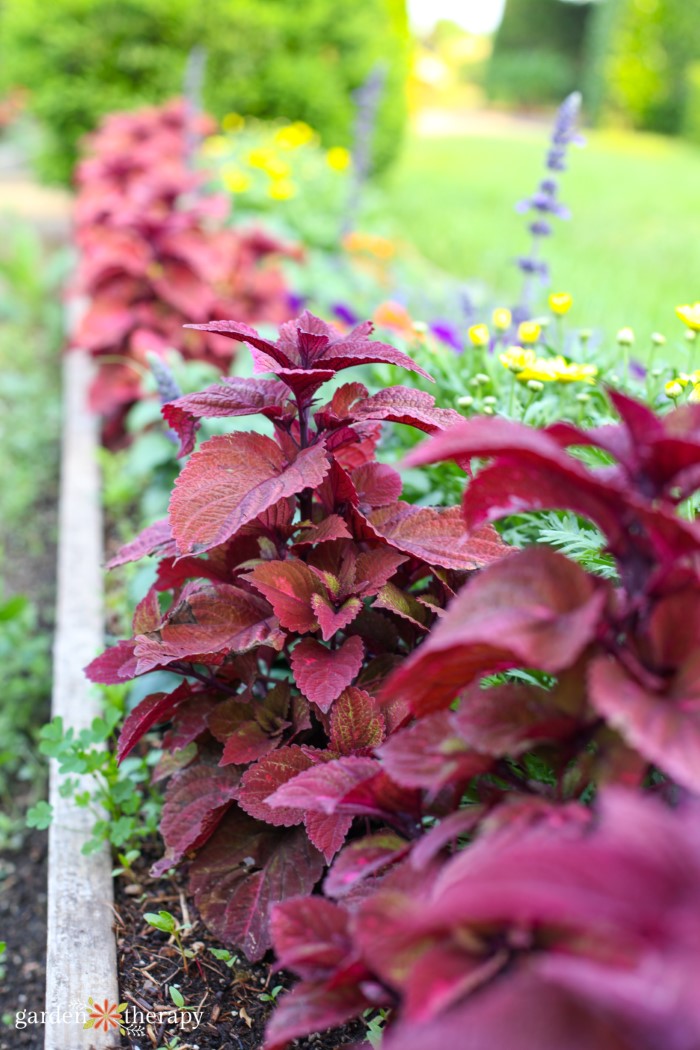
Coleus Propagation
If you like coleus, I have good news for you! Propagating the tropical plant is super simple and requires very minimal effort. The tropical plant prefers water propagation, meaning you simply take a cutting, plunk it in water, and watch the roots grow.
To take your cutting, you ideally want it to be 4-6 inches in length. On top, you will have a set of four leaves and a couple of sets of leaves on the stem. Cut just below a node (where leaves attach to stem).
Once you have your cutting, remove any lower leaves so they won’t be submerged underwater. Place your cutting in water and put it in bright, indirect sun.
The plant will root quickly. Once the roots are an inch in length, you can transplant the cutting into the soil.
Propagating coleus is one of the best annual gardening tricks. At the end of the gardening season, take a few cuttings of your coleus and propagate them inside. While the outdoor plant dies in the cold weather, the plant babies thrive inside.
Come spring, they will be big and ready to be planted outside once again. Repeat this every year to have continuous coleus without spending a penny!
To learn more about propagation, make sure to check out this detailed guide to propagation!
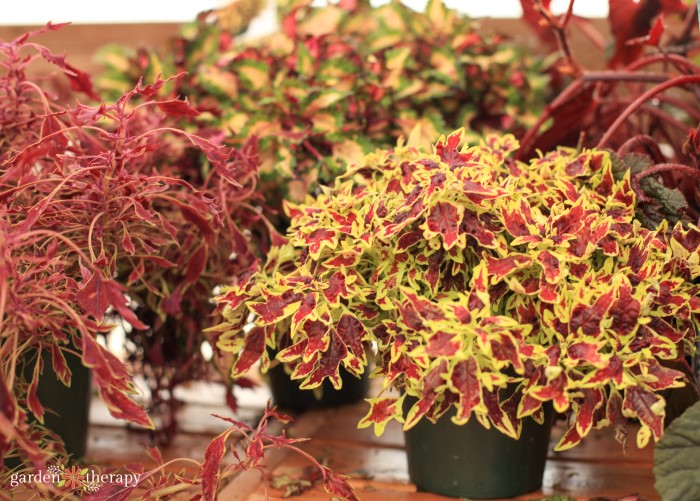
What is a Scaredy-Cat Plant?
You may have heard rumblings about scaredy-cat plants. An old wives’ tale says that a species of coleus, Coleus canina, stinks SO bad, that any cats, dogs, rabbits, and other small creatures will stay as far away as they can.
Unfortunately, I’m here to debunk this myth. While the plant certainly has a skunky smell, cats don’t seem to mind. However, the pretty, light blue flowers may attract some pollinators to your yard such as bees and butterflies.
If you plant a scaredy cat plant, always wear gloves when planting or pruning the plant. While cats may not shy away from the smell, I certainly do! When touched, rubbed, or cut, the smell intensifies.
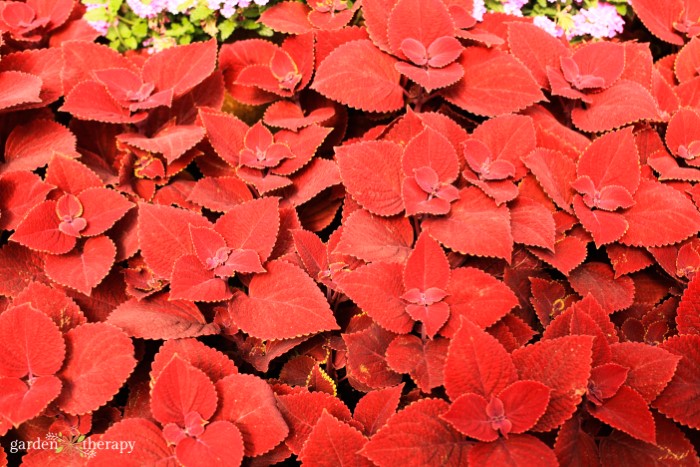




Ive been making your recipes. Enjoy your advices and your knowledge. But I cant seem to do infusion recipes. I cant get it right. Is there a recipe that you can make for someone like me. It would be for most flowers same recipes right like rose chamomile lavender calendula marigolds??
Thank you so much
Chantal